:GYMNASTICS:
- About:
Gymnastics is a sport that requires balace, sterngth, flexibility, agility, coordination and endurance. The movements involved in gymnastics contruibute to the development of arms, legs, shoulders, back, chest and abdominal muscle groups.

- Types of Gymnastics:
Competative artistic gymnastics is the best known of the gymnastics events. It typically involves the woman's event of Vault, Uneven bars, Balance beem and Floor exercise as well as the men's events of floor exercise, Pommel horse, Still rings, vault, Parrael bars and Horizontal bar.
the different types of Gymnastics are:
Rhythmis Gymnastics is the perfect combination of sport and art, linking expressive dance steps with skillful mainpulations of ball, rope, ribbon, hoop or clubs:throw, spin, spiral, roll and catch.
The benefits of Rhythmic Gymnastics are:
- Develops posture and confident body movement, for sport and life.
- Enhances co-ordination and agility for body awarness and balance
- Enhances creativity and builda self-confidence.
- Increases flexibility and strength and prepares the body for the life's challenges
- Develops healthy minds and bodies for now and later life.
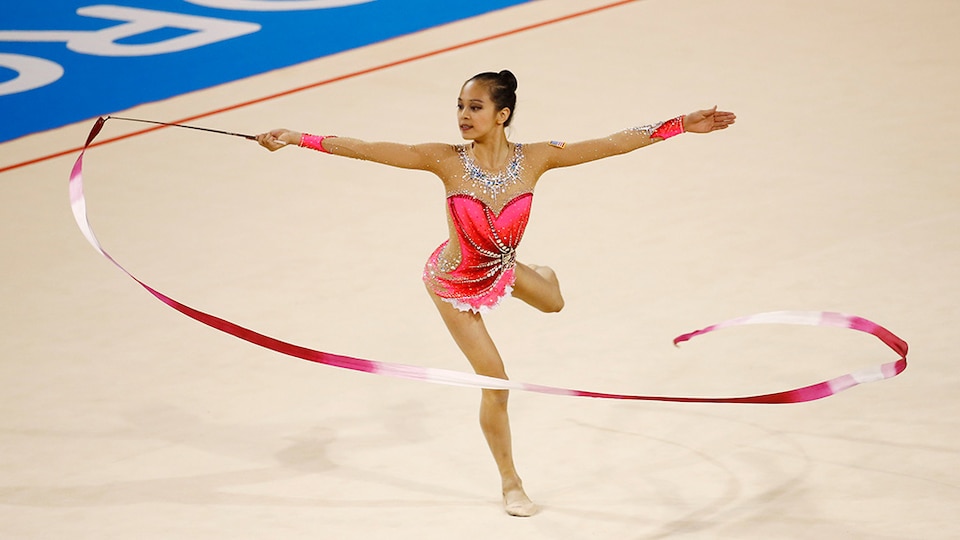

Starting at the 2008 Olympic games, Trampoling has become an Olympic sport. The spot of Trampoling and Trumbling have three apparatus. They are Trampoline, double mini trampoline and power tumbling.
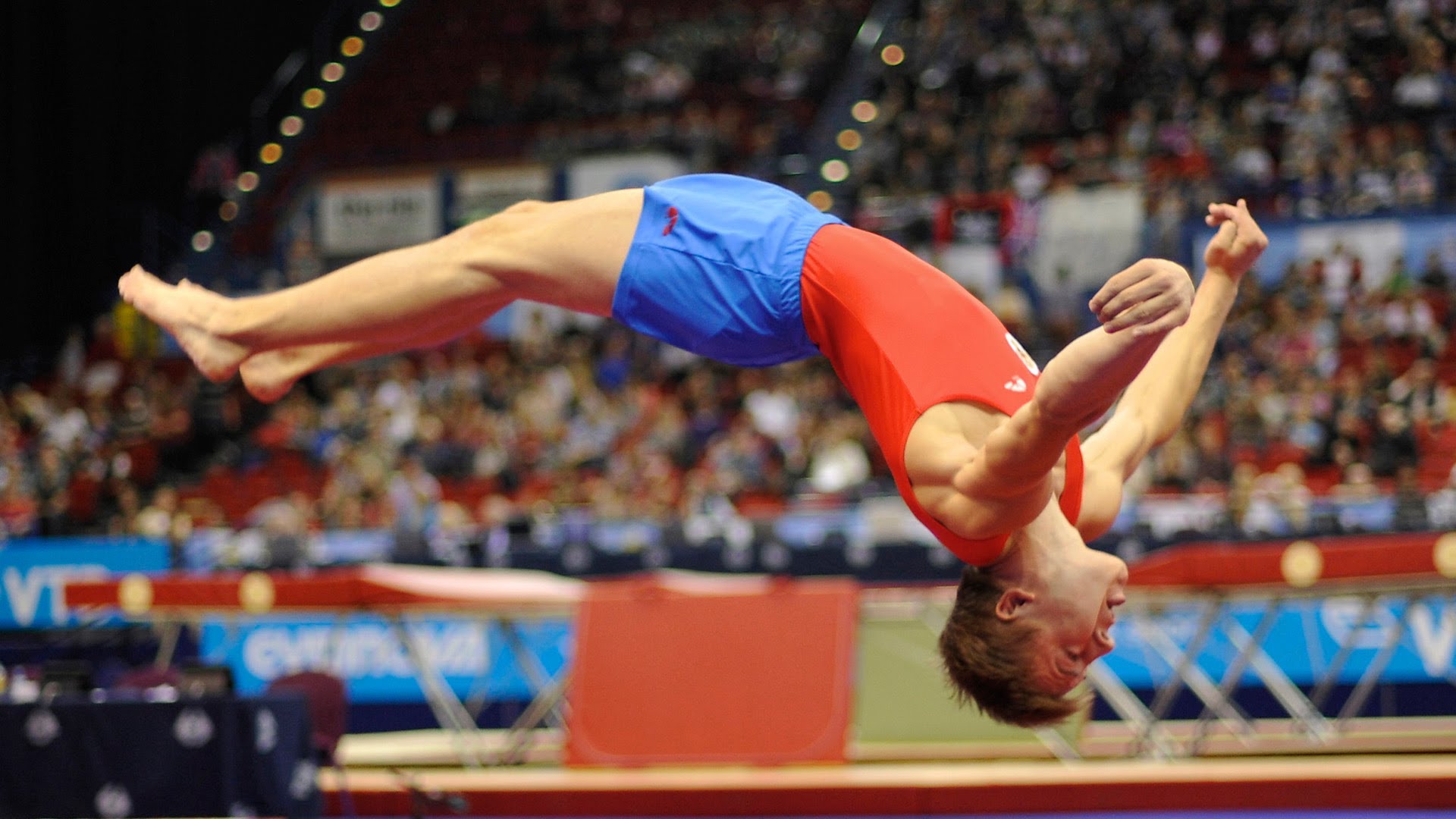
Acrobatic gymnastics is a spectacular sport for people who want to share the thrill of peforming balances, flips and twists the their friends. While other gymnastics might handsatand on the bars or beam, acrobats find themselves balancing on their team mate's feet, hands or shoulders. With roles as tops, middles or bases, there is a every one in acrobatic gymnastics.
The categories of Acrobatic Gymnastics are:
- Women's group 3:
- Mixed pairs:
- Women's pair:
- Men's pair:
- Men's group of 4:
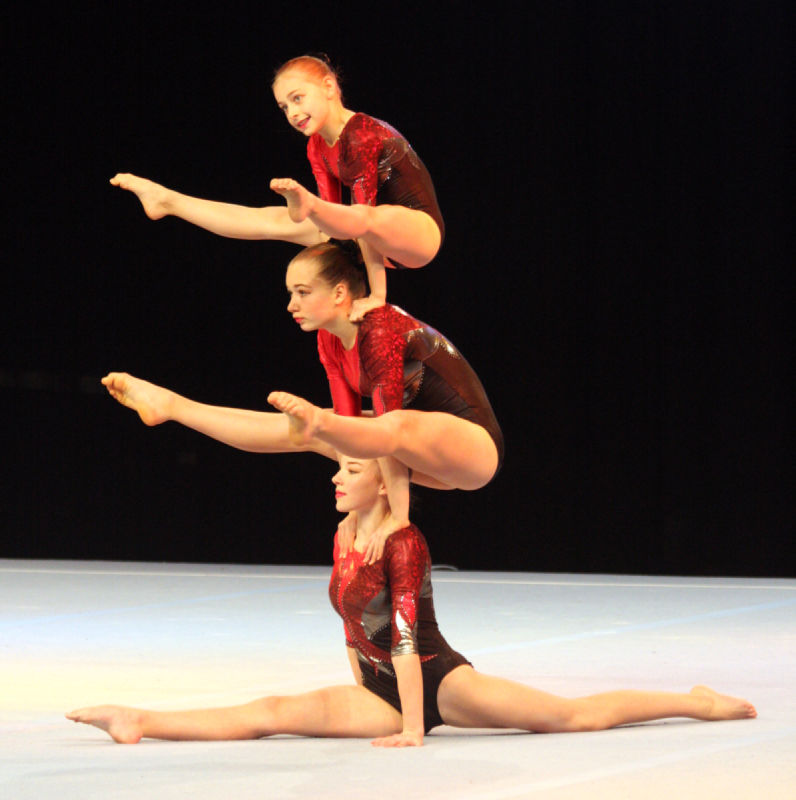

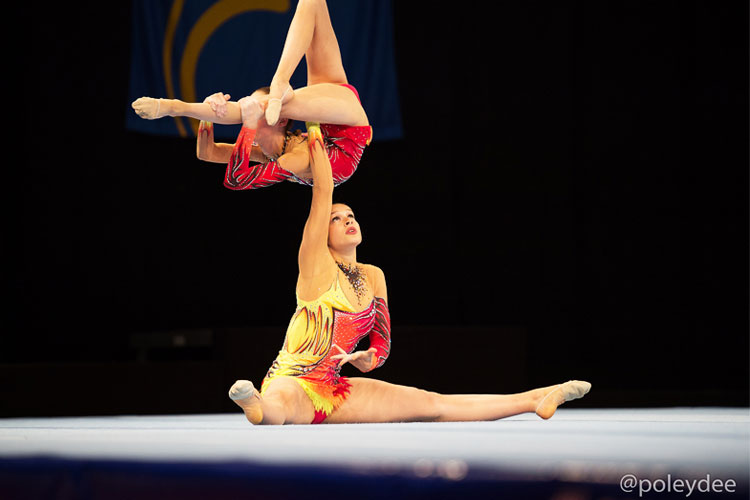
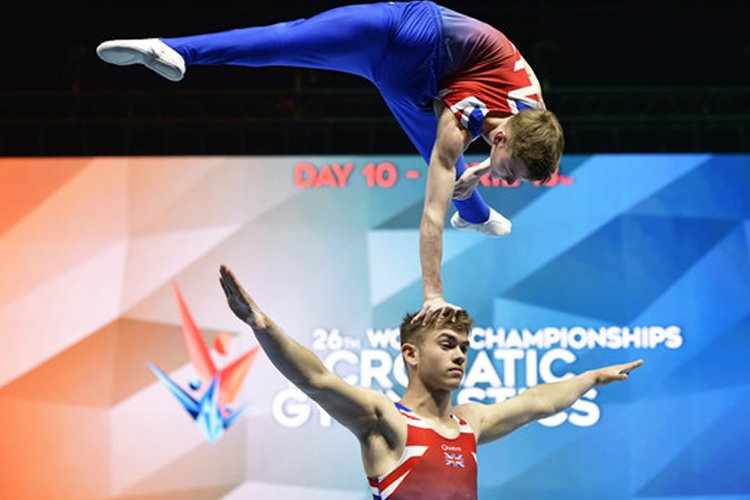
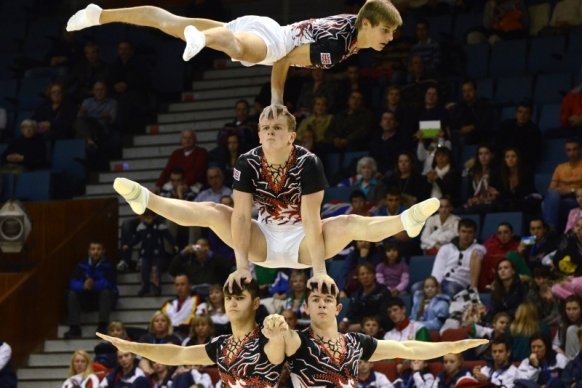
Aerobatic gymnastics, also known as sport aerobatics, involves the performance of routines by individuals, paor, trios, or groups of up to 6 people. These routines typically emphasise strength, flexibility and aerobic fitness, rather than aerobatic or balance skills. Routines typically lasting 60 to 90 seconds are performed on floor, without the use of other apporatus.
Parkour is a training disipline using movement that developed from military obstacle course training. Practitioners aim to get from one point to another in a complex environment , without assistive equipment and in the fastest and most efficient way possible.

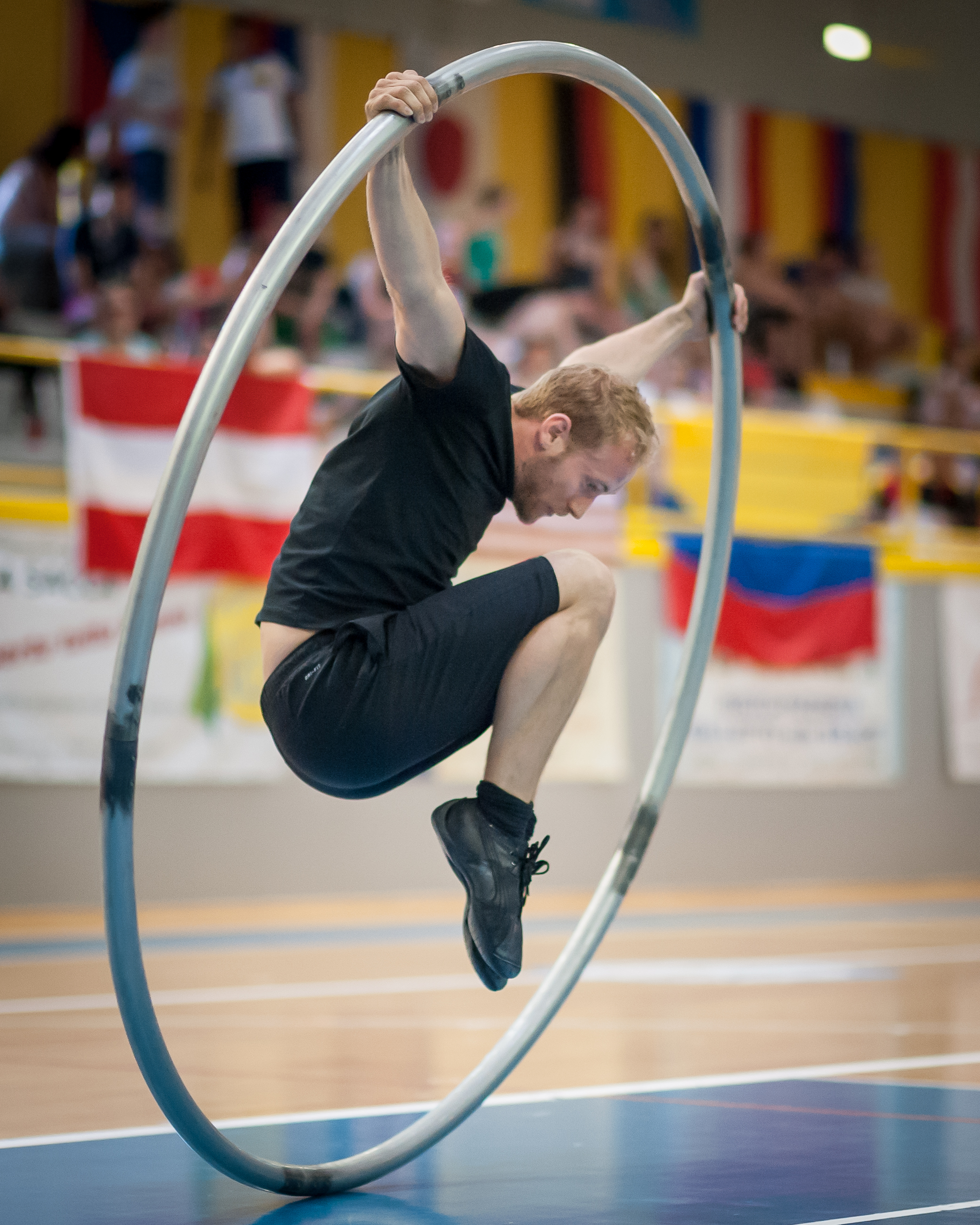
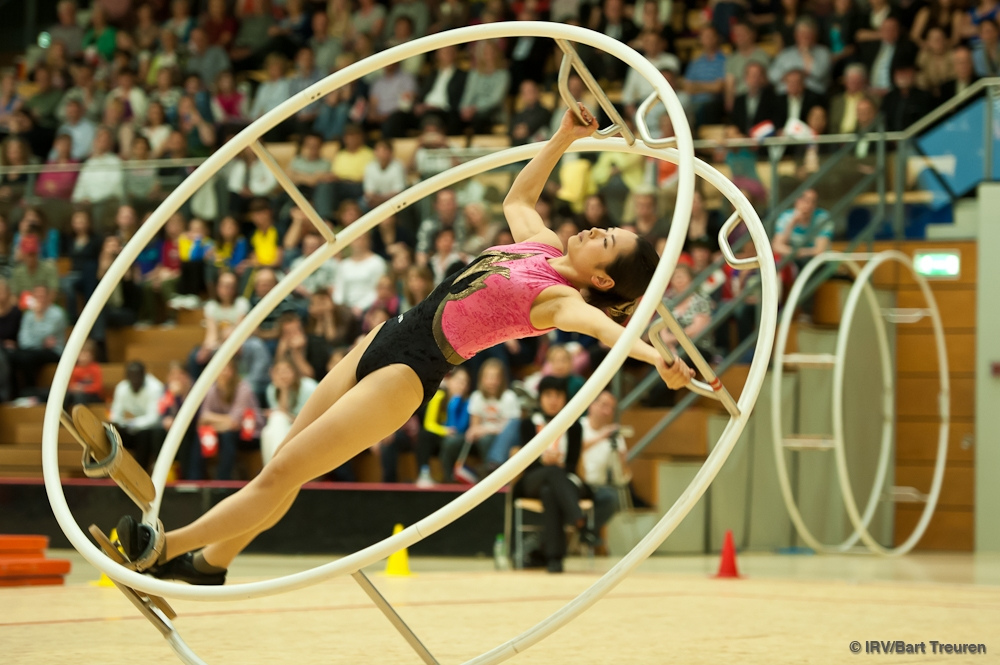
Athestic Group Gymnastics(or AGG) is a team sport where a large group gymnastics perform coordinated continuous movements, that test elements like speed, strength, flexibility and balance.
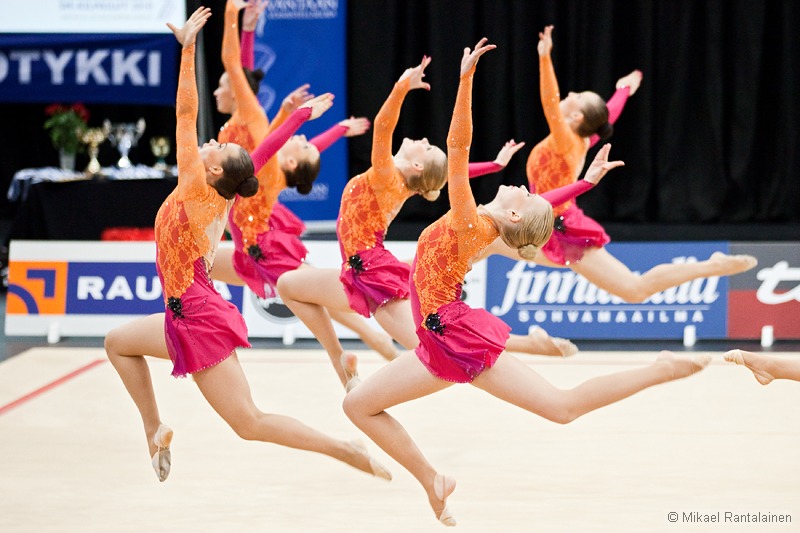
- The participant countries:
Russia, ROmania, United states of America.